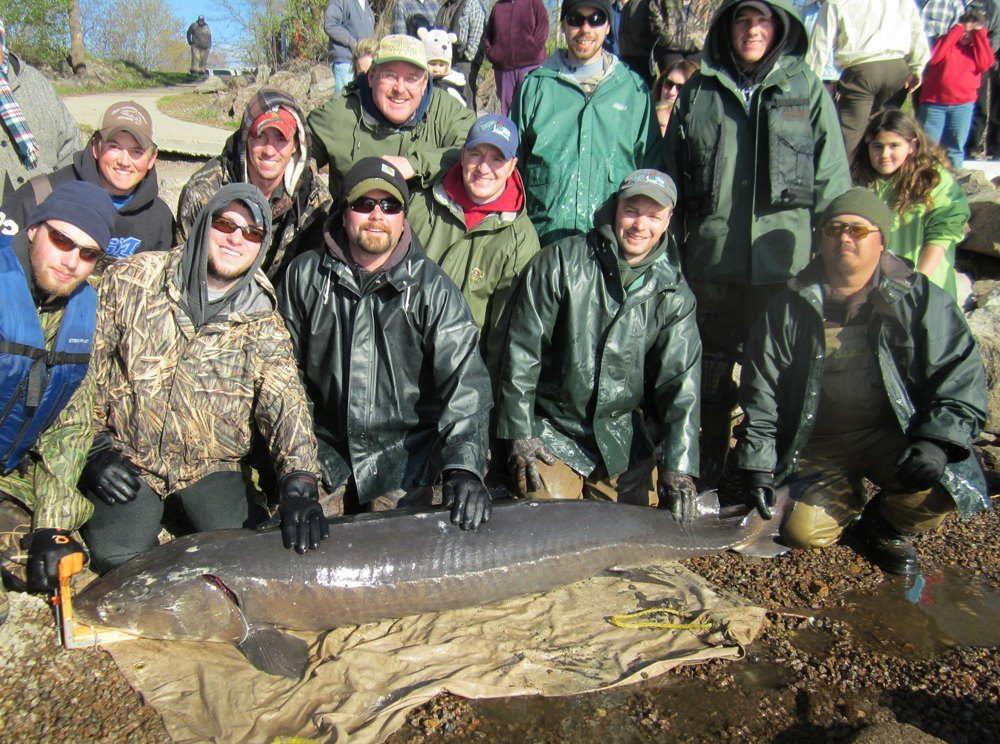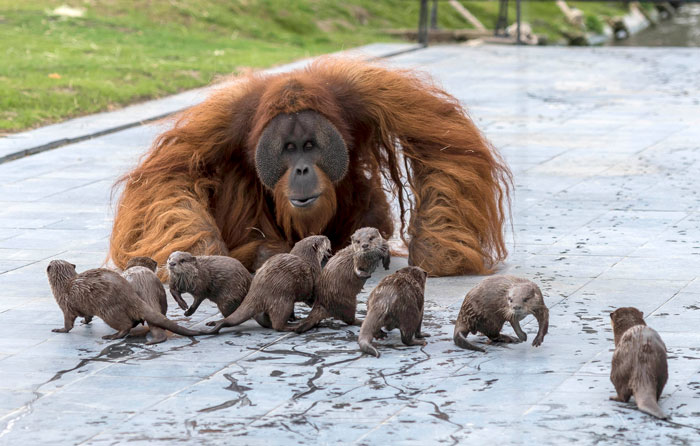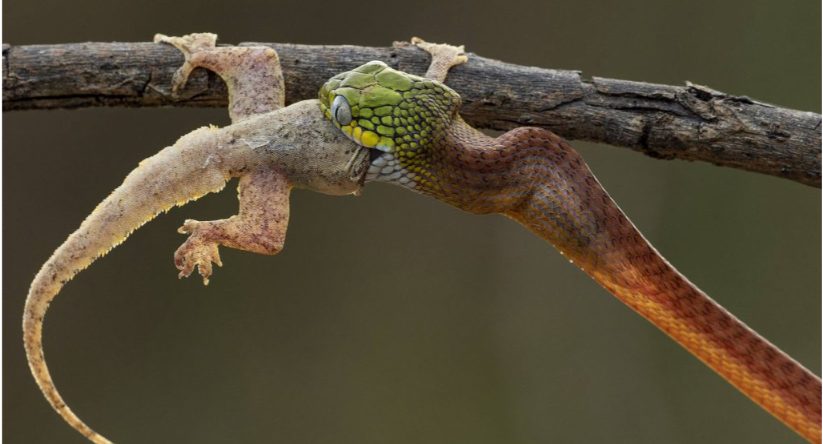Hunters have a term to describe the tingling surge of adrenaline and excitement of seeing a deer for the first time: buck fever.
Fred Breglia, an arborist from Cobleskill, gets tree fever. And he got a bad case of it a few weeks ago.
It happened while Breglia and his wife, Erin, were driving in Schaghticoke, a rural town in Albany’s northern exurbs nestled in a bend of the Hoosic River. Breglia spotted a colossal eastern cottonwood tree rising from the distant floodplain, towering over the trees around it “like the Empire State Building,” he said.
Breglia turned to Erin, mouth agape. “Oh my god,” he intoned.
Breglia is the executive director of the Landis Arboretum and an elite player in the competitive world of big tree hunting. He also runs a popular Facebook group dedicated to the sport. Over his 20-year career combing New York’s fields and forests for so-called “champion trees,” Breglia’s name has appeared next to dozens of entries in the state’s Big Tree Register.

From the moment he first glimpsed the Schaghticoke cottonwood, Breglia knew it could be a state champion, maybe even the biggest eastern cottonwood in the country. But first he had to measure it.

Fred Breglia, executive director of the Landis Arboretum, recently discovered New York’s biggest tree, an eastern cottonwood in Schaghticoke that stands 108 feet high with a massive trunk that measures 34 feet in circumference (a diameter of about 11 feet).Photo by Fred Breglia
American Forests, a nonprofit conservation organization, maintains a register of champion trees organized by species and state. According to the group’s formula, a tree’s size is determined by adding up its circumference, height, and a portion of its crown, or canopy.
“With that point total we’re able to compare, let’s say, a tall, skinny tree to a really short fat tree,” Breglia said. “The highest numbers with a single trunk wins.”
The big cottonwood looked wrinkled and worn without its leafy cloak, revealing skeletal gaps from limbs lost over the years. To ensure that it was a single trunk and not a disqualifying fusion of multiple trunks, Breglia tramped over a tangle of bittersweet vines encircling the tree, counting his paces, his sense of awe growing with each step.
Breglia was transported back to his childhood, when his mother first took him to see a giant oak tree overlooking the hollow where they lived. This was an old-growth tree, his mother explained, a living relic of the primeval forest that existed here before settlers clear-cut the land.
“That tree made a profound impression on my young brain,” Breglia said. “I was blown away.”

Fred Breglia, executive director of the Landis Arboretum, recently discovered New York’s biggest tree, an eastern cottonwood in Schaghticoke that stands 108 feet high with a massive trunk that measures 34 feet in circumference (a diameter of about 11 feet).Photo by Fred Breglia
Then Breglia wrapped his circumference tape around the big cottonwood’s fissured trunk and was blown away once more.
“I was watching those numbers go up. 21, 22, 23…” Breglia said. “When it got to 30 feet and I was still going, I’m pretty sure the neighbors probably heard me yell ‘This is huge!’”
The circumference of the Schaghticoke cottonwood measured 33 feet 9 ¼ inches, or about 11 feet in diameter.
Using a laser measuring device, he and Erin notched the tree’s height at 108 feet. Breglia estimates the Schaghticoke cottonwood rates 538.875 total points.
When the state Department of Environmental Conservation confirms that number, which Breglia believes could happen by year’s end, the tree will surpass another eastern cottonwood (475 points) as New York’s biggest tree.
The Schaghticoke cottonwood even has a shot at becoming the biggest cottonwood in the country, Breglia said. Right now only two eastern cottonwood trees, one each in Nebraska (565 points) and Kansas (558 points), are bigger, though they were last measured almost a decade ago.
Their tops could’ve broken off in that time, and besides, said Breglia, “those trees aren’t really clear single trunk trees like we have in Schaghticoke.” The response he’s received so far at the national level has been “overwhelmingly positive,” he said.
“And if it’s the biggest in the U.S., it has the potential to be the one of the biggest eastern cottonwoods in the world,” Breglia added.

Erin Breglia poses next to New York’s biggest tree, an eastern cottonwood that stands 108 feet high, with a massive trunk that measures 34 feet in circumference (a diameter of about 11 feet). Breglia’s husband, Fred, executive director of the Landis Arboretum, recently discovered the tree in Schaghticoke, a town 30 minutes north of Albany.Photo by Fred Breglia
Of the 750 trees native to North America, eastern cottonwoods are among the fastest growing, especially in the northeast where conditions are most favorable, said Don Leopold, distinguished professor at SUNY College of Environmental Science and Forestry and author of “Trees of New York State.”
Cottonwoods aren’t notable for their fruit, flowers, or fall color, Leopold said, “but in terms of massiveness, this tree is famous for that, and [the Schaghticoke cottonwood] is really extraordinary. I can’t think of anything that comes close to it.”
Cottonwoods are also among the shortest lived trees in the U.S., Leopold said, averaging 75-100 years old. Breglia estimates that the Schaghticoke cottonwood is somewhere between 200-300 years old, but Leopold says it’s unlikely the tree is older than 150 years.
Pinpointing the tree’s exact age would require a core sample, but it’s simply too big, and too old, to drill, Breglia said. They don’t make bits big enough for the job, and some of the tree’s interior is probably rotten.
The next best thing would be to take a core from one of its lower branches, each one alone the size of a mature cottonwood tree. But Breglia can’t attempt that until ownership of the tree, which predates the invisible grid of property lines that run underneath it, can be sorted out.
In the meantime, the Schaghticoke cottonwood will retain a bit of its mystery. Unless a storm knocks it over, allowing a peak at its growth rings. Cottonwoods are notoriously brittle trees, Leopold said, an adaptive trait that allows broken branches to be swept downstream and take root elsewhere.
Like any serious tree hunter, Breglia is prepared for that eventuality. During a recent Hudson River fishing trip he scoped out another giant cottonwood that “scores in the high 400s,” he said, making it second only to the Schaghticoke cottonwood as NY’s biggest tree.
“That’s what keeps us big tree hunters going,” Breglia said. “Just when you think you’ve got the record book set, another big one comes to the surface, or one of the big champions breaks apart, and it opens the door for other trees to be new champions.”
While Breglia enjoys the thrill of the hunt, searching for big trees is one way to highlight the importance of the oldest forests and get people interested in the environment, he said. Who knows what he’d be doing now if his mother didn’t take him to see that legendary giant oak tree when he was a kid.
“Most people like a big tree,” Breglia said. “Really doesn’t matter what political party you are, what language you speak. We all speak big tree.”
Source: newyorkupstate.com








